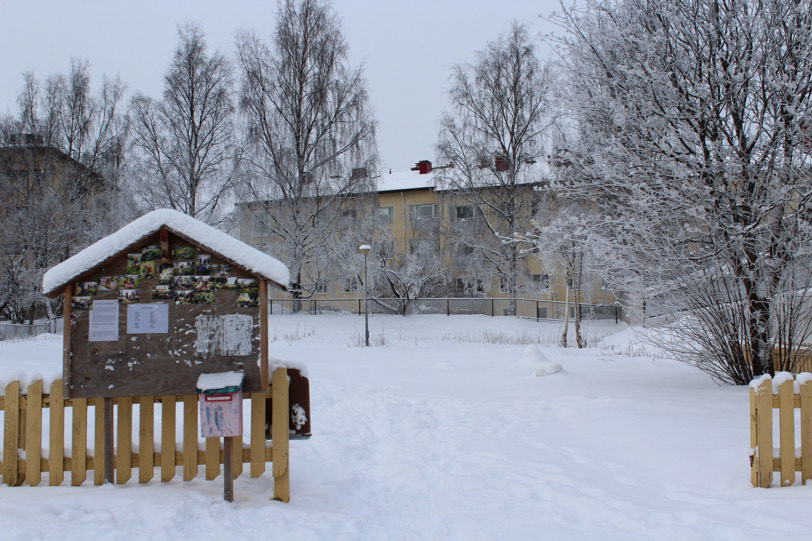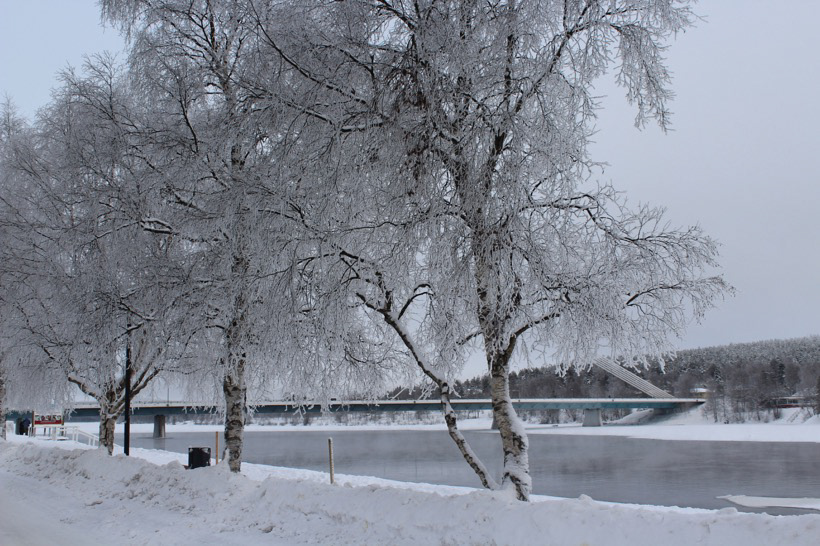Collaboration between Anu Mantsinen & Anu Corin
MA Arctic Art and Design, University of Lapland
MA Arctic Art and Design, University of Lapland
Desctiption: Our idea was to combine urban farming and an evolving space installation, which would create a starting point for an organic shape to grow and take form. The design is defined by the environment, and the power of shaping it is given entirely to the creative citizens of Rovaniemi. The installation is a statement on Rovaniemi city plan, giving power to the people to create their own city. Because the community is in a constant interaction with the place, influencing the atmosphere of the entire city, even small interventions and actions can have a big impact on urban environments.
We see our part of the work as equal to planting a tree; it’s only a starting point around which life can take form. The poles, installed in the ground in the form of a hexagon, have sets of three holes at different levels. The holes are made at 120 degree angles of the pole and in the standard size of boards, allowing several solutions to connect the poles of timber. The editable structure allows different kind of solutions around urban farming and space solutions. It could be e.g. a place where to grow vines, make benches around a fireplace, make a tent sauna or simply a structure where to hang your hammock a sunny afternoon or a swing. It also allows more permanent structures to grow on height and in layers, creating a shelter, stairs, a ladder or a pavilion for different kind of events.
The inspiration for the installation comes from the core beauty of how animals build their shelters perfectly integrated into the environment and adapted to the animals way of living. Juhani Pallasmaa states an urgent need for better-adapted forms of life and architecture stating that “we should, perhaps, begin to imagine ourselves inhabiting houses inspired by the animal master-builders” (Pallasmaa, Animal Architecture, 1995, p. 88).
As our site is at first glance an empty space in the riverside of Rovaniemi, close to the centre, we can start to think about efficiency of the space. Mathematicians have proven in the history that the hexagon shape would be the most efficient, if we want to cover a field with one shape, without leaving gaps. The hexagon shape can be found repeatedly in nature – the beehive honeycomb, giants causeway, galaxy formations, micrograph of snowflakes. The beauty of the hexagon shape is that it can easily be divided into equal shapes and be scalable. The size of our structure is in scale with the measurement of one cell, by the width of 5,2 mm, of the beehives honeycomb. This repeating shape pattern holds the most content and is constructed out of the least material. Hexagons symbolize community and connectivity as they can spread from point of connection to another and rapidly expand outward or divided infinitely.
Using log as a material is honoring the old traditional building materials. In the history of Rovaniemi timber and logs have been transported along the waterways (Kemijoki). To use this material on the shore of the river is a comment on present material use and construction methods. Perhaps we could learn something from the history?


Modelling by Anu Mantsinen